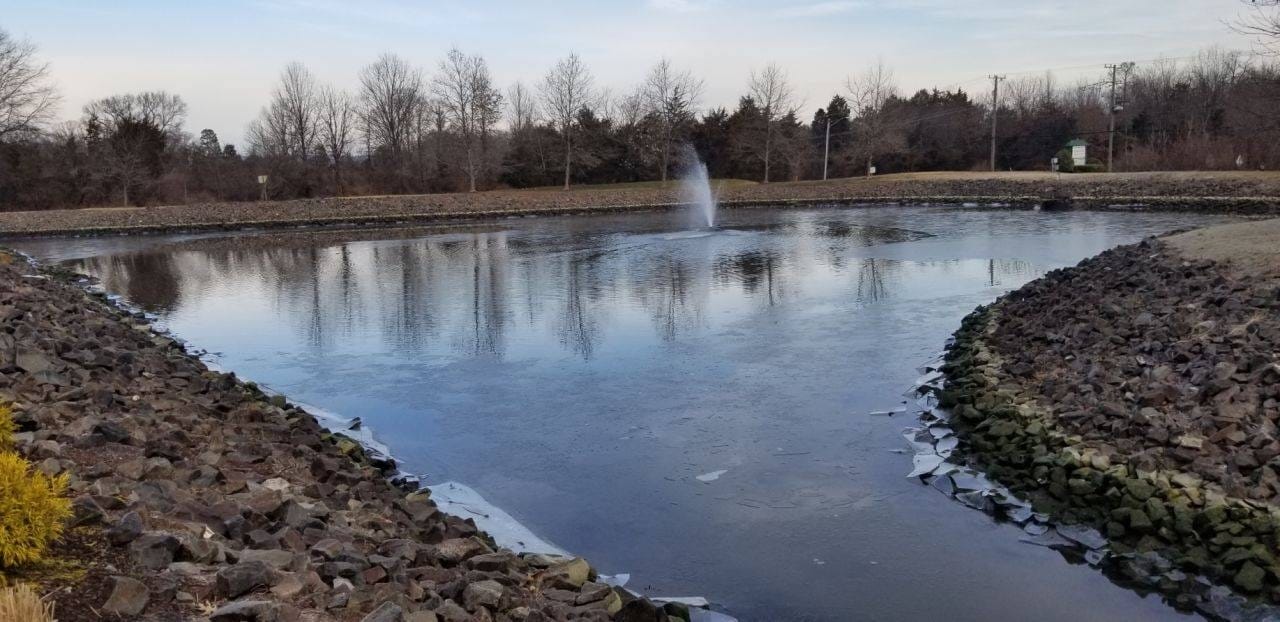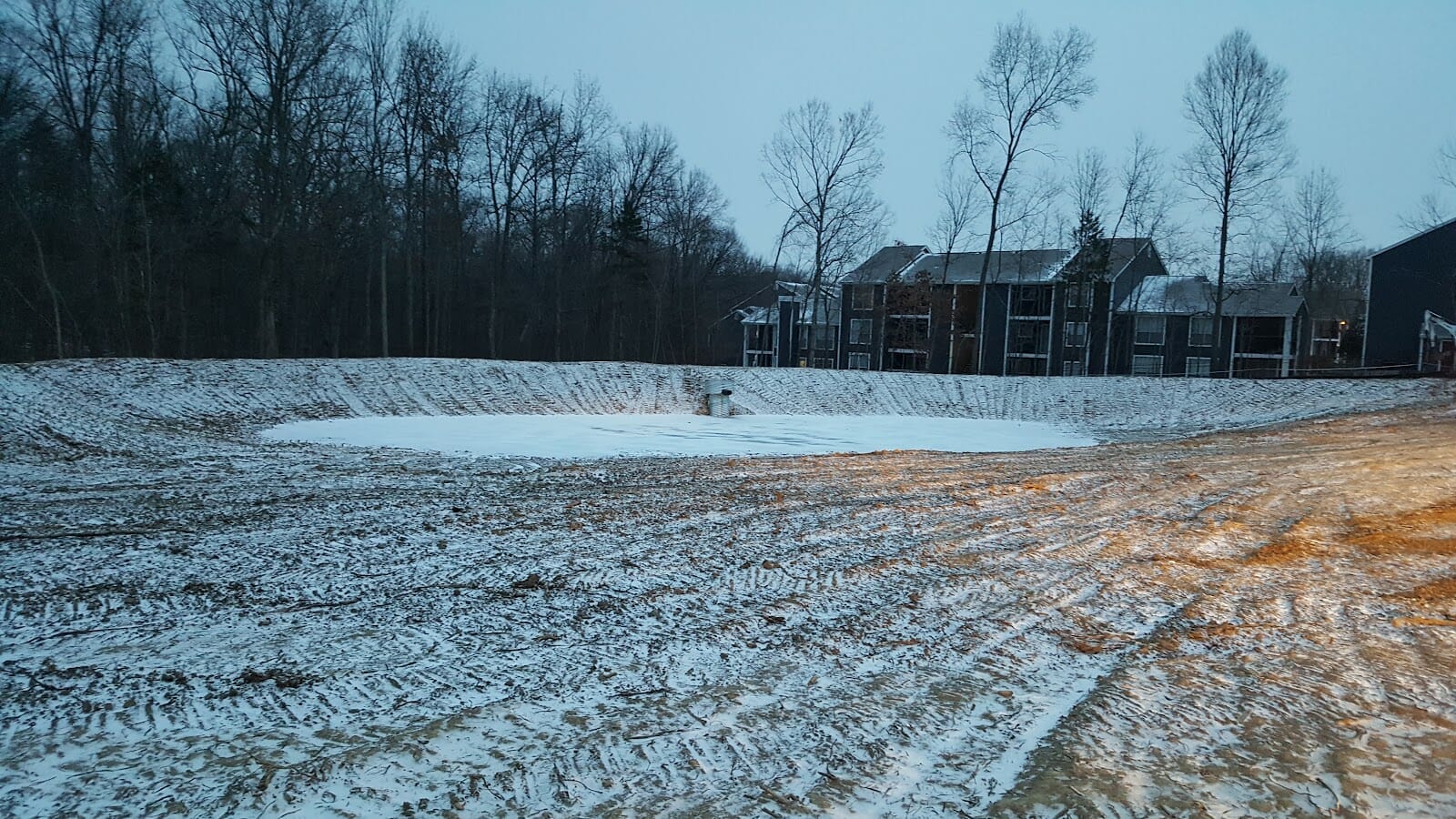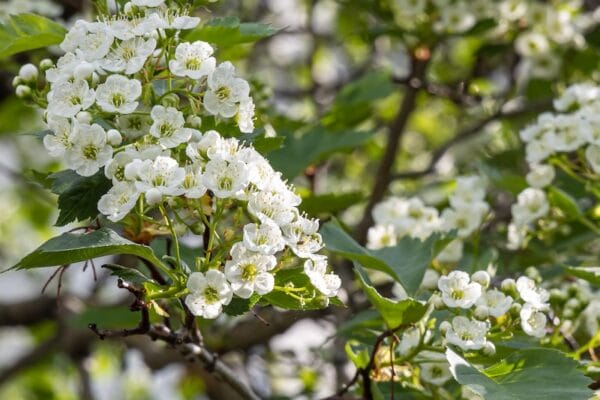“Green infrastructure doesn’t work well in the winter.”
This all too common trope couldn’t be further from reality. From rain gardens and bioretention basins to permeable pavements and infiltration basins, green infrastructure BMPs have successfully shown their ability to manage and treat stormwater, even in cold-weather climates.
Of course, like all things, green infrastructure is not immune from winter’s wrath. In Virginia, Maryland, Pennsylvania, North Carolina, West Virginia, Delaware, and Washington, D.C., where Muller, Inc. operates, freezing temperatures, snow, and ice routinely take their toll on the living infrastructure.
Fortunately, maintenance and planning can ensure your green infrastructure BMPs are ready to endure the effects of winter.
Winter Impacts on Green Infrastructure
Winter has a significant impact on all types of infrastructure thanks to a mix of freezing temperatures, rain, ice, and snow. Potholes, freezing and bursting pipes, and utility failures are common issues experienced during winter. So, it’s not surprising that the effects of winter also impact green infrastructure.
When it comes to green infrastructure, cold temperatures can cause plants to die, and freezing conditions can impact hardscape features like walkways, benches, and retaining walls. Yet, one of the biggest problems for green infrastructure is the continuing use of salt during winter weather. Road salt, also known as sodium chloride, is used throughout the United States. It’s especially used in Virginia, Maryland, and Washington, D.C., to melt ice and snow from roadways, parking lots, and sidewalks. A practical and inexpensive tool for improving pedestrian and motorist safety during winter travel. However, road salt has its faults.
As green infrastructure is usually directly interlaced with sidewalks, parking lots, and roadways, salt applied in the name of safety can cause issues for green infrastructure and the environment. Sodium and chlorine, the elements that make up salt, often leach into the ground, receiving waters, and even drinking water. And because rock salt isn’t purified and contains contaminants — including lead, iron, aluminum, and phosphorus. Therefore, when it leaches, these elements are also spread.
For trees and plants, a vital element in green infrastructure facilities, salt can be detrimental to the soil and the air. When sodium and chlorine infiltrate, it displaces other nutrients in the ground. Trees and plants then absorb sodium and chlorine instead of needed nutrients leading to decreased growth. In some cases, sodium chloride can be toxic when high quantities accumulate in the roots. When salt comes in contact with foliage, chlorosis and necrosis can result.
Maintaining Green Infrastructure Facilities in Winter
The good news is that there are ways to prepare green infrastructure facilities to remain effective during winter. Taking your region’s climate into consideration, being aware of soil types, and developing an executable operation and maintenance plan can ensure that your green infrastructure will be able to cope with winter without any serious problems.
These tips will help you maintain the facilities:
- One good tip is to find an alternative to the use of sodium chloride. Magnesium chloride works best at temperatures greater than 5 degrees Fahrenheit. When temps dip below 5 degrees Fahrenheit, switch to calcium chloride instead.
- It is also a good idea to use the liquid form of both magnesium chloride and calcium chloride instead of their solid forms.
- Another good tip is to educate maintenance staff on the correct application techniques in order to avoid over-application.
- Choosing plants and trees better suited to tolerate salt in the soil or air can also be a good idea. Ginkgo, hawthorns, silver maple, and red oak are just some examples of salt-tolerant species.
- In early spring, flush any remaining salt from beds, sidewalks, and water harvesting systems. Try to time the flushing to take place following the last ice event and before the budding season. It is also important to remember to have the tree canopies washed.
- Well-draining soil should be used in large quantities in the area as this provides trees with a big buffer against salt concentration while also significantly cutting down the impact of salt in water. If trees have been planted in poorly draining sub-soils, subsoil drain lines should be installed to improve drainage rates.
Benefits of Green Infrastructure Facilities in Winter
One of the common concerns surrounding the effectiveness of green infrastructure systems during the winter months is that the biological function “turns off” when winter hits and vegetation goes dormant. However, several studies have found the opposite to be true.
While most plants are dormant during winter, the system retains residual plant material. This residual material still performs a degree of filtering and settling of runoff and pollutants. Vegetated systems may not be actively absorbing nutrients and pollutants during winter months, however, they still remove many settleable solids and suspended sediments. This underscores the system’s year-round resilience and its capacity to sustain essential water quality management functions, ensuring a continued level of protection for the surrounding environment.
Preparing for the Winter
Fortifying and maintaining your infrastructure for winter and our region’s extreme weather events can be a challenging and often intimidating process. To ensure your facilities are in optimal working order, partner with an experienced stormwater maintenance provider.
Muller, Inc. may not be able to control the weather, but we can make maintaining your green infrastructure facilities smoother and easier. Contact us today via our website or call 703-560-4040. Our team of certified stormwater and green infrastructure experts can help you better maintain your facilities, help you develop a successful O&M plan, or construct stormwater and green infrastructure.






